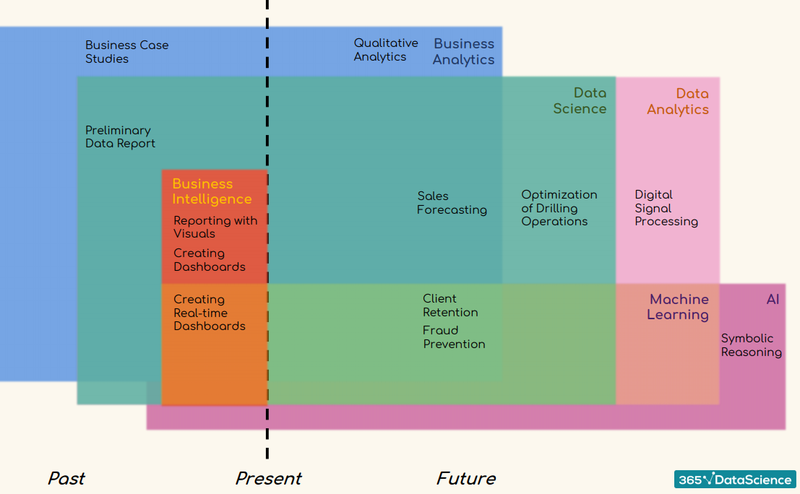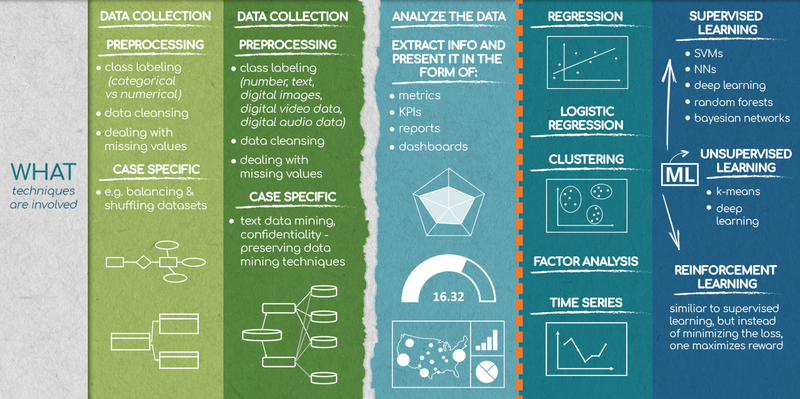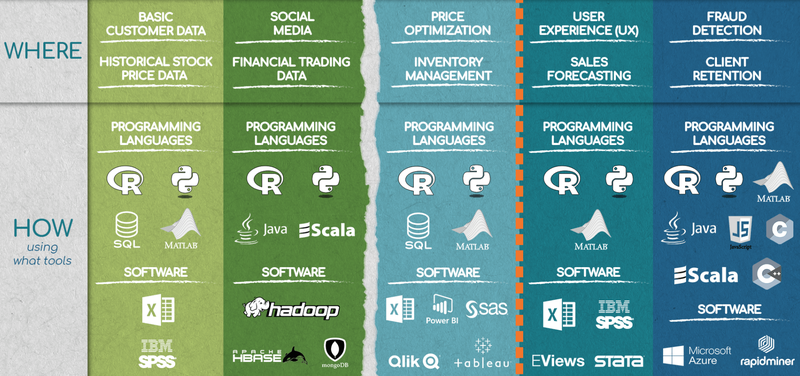Introductions to Data Science
 Vuong Huynh
Vuong Huynh
Data Science Diagram
In the Past: Analysis
- Business Case Study
Preliminary Data Report - Business Intelligence
- Reporting with Visuals
- Creating Dashboards
- Creating Real-time Dashboards
In the Future: Analytics
- Qualitative Analytics & Business Analytics
Data Science & Data Analytics
- Sales Forecasting
- Optimization of Drilling Operations
- Digital Signal Processing
- Client Retention & Fraud Prevention
- Machine Learning
- Artificial Intelligence
(Below diagram is provided by 365 Careers)

The Fields of Data Science Big Picture
Data: Traditional data is different from Big data by the volume of data.
Data Science: Business Intelligence (past). Traditional Methods and Machine Learning (future)
- Business Intelligence: analyzing, understanding, and reporting available pass data to help to make decisions, extract insights and ideas
- Traditional Methods: a set of methods that are derived mainly from statistics and are adapted for business. Perfect for forecasting future performance.
- Machine Learning: using math, computer, and AI to predict outcomes from data without being explicitly programmed to. Using algorithms for predictions with unprecedented accuracy.
- Four ingredients of a machine learning algorithm: Data, model, objective function, the optimization algorithm
- The core of machine learning is creating an algorithm, which a computer uses to find a model that fits the data as best as possible
- In machine learning, one does not give the machine instructions on how to find a model. Rather, one provides it with algorithms that give the machine directions on how to learn on its own.
- A machine learning algorithm is like a trial-and-error process, but the special thing about it is that each consecutive trial is at least as good as the previous one.
Good introductions in Machine Learning
Three major types of Machine Learning.
- Supervised learning: training an algorithm resembles a teacher supervising her students. (using labeled data)
- Unsupervised learning: always working with unlabelled data
- Reinforcement learning: a reward system is being used to improve the machine learning model at hand. The idea of using this reward system is to maximize the objective function.
(These pictures below provided by 365 Careers)
WHEN it is applied and WHY you need it.

WHAT techniques are involved

Regression is a model used for quantifying causal relationships among the different variables included in your analysis.
WHERE and HOW using what tools

WHO - Are you aware

All sources from The Data Science Course 2020: Complete Data Science Bootcamp